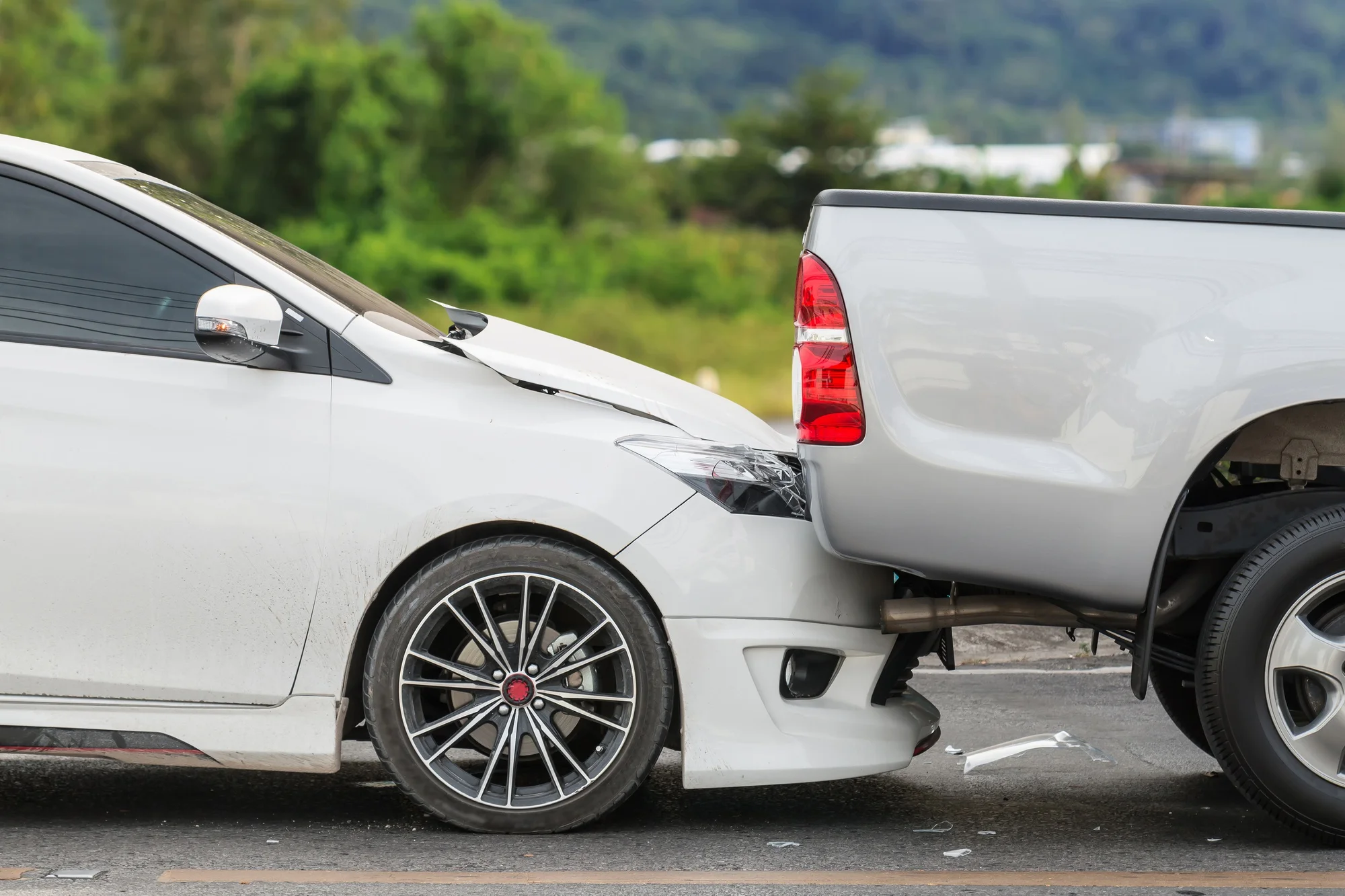Motorcycle accidents pose significant risks to riders, with injuries often more severe than those in enclosed vehicles. According to the National Highway Traffic Safety Administration (NHTSA), motorcyclists face a substantially higher fatality rate compared to passenger car occupants. In a recent year, 4,957 motorcycle riders lost their lives, representing a 7% increase and accounting for 14% of all traffic fatalities. The fatality rate for motorcyclists was 23.41 per 100 million vehicle miles traveled, starkly contrasting with 0.90 for passenger cars. Additionally, 93,000 motorcyclists sustained injuries in crashes during the same period. These statistics highlight the critical importance of understanding common motorcycle accident injuries and taking appropriate preventive measures to enhance rider safety on the roads.
Common Motorcycle Accident Injury Types
Motorcycle accidents pose unique dangers due to riders’ heightened exposure and limited protection compared to enclosed vehicles. Statistics from the NHTSA reveal that motorcyclists face a significantly higher risk of fatal injuries in crashes than car occupants. The severity of injuries in motorcycle accidents can be influenced by various factors, including the motorcycle’s size, the opposing vehicle’s dimensions, and the speed at which both were traveling at the time of impact.
Internal Injuries
Motorcycle accidents can result in serious internal trauma, which may not be immediately apparent but can have life threatening consequences. These injuries often stem from two primary mechanisms:
- Impact injuries: When a powerful force is applied without breaking the skin.
- Penetration trauma: Involves sharp objects piercing the body during the accident.
The forceful impact of a motorcycle crash can inflict significant damage on vital internal organs like the liver, spleen, or kidneys, potentially causing hidden internal hemorrhaging. Additionally, the rapid deceleration experienced during a crash can result in injuries like aortic ruptures or brain contusions. Given the potential for these hidden yet critical injuries, it’s crucial for all motorcycle accident victims to undergo thorough medical evaluation even if external injuries seem minor.
External Injuries
External injuries in motorcycle accidents can range from minor abrasions to severe, life altering conditions. Here are some common types of external injuries:
- Road rash: This skin abrasion occurs when riders skid across the pavement after being thrown from their bike. Severity can vary from mild to severe, with the latter potentially leading to infections, nerve damage, and permanent scarring.
- Burn injuries: These can occur from contact with heated motorcycle components or ignited fuel. Severe cases may necessitate skin grafts and could lead to long-term complications.
- Lacerations: Deep cuts from debris, broken glass, or impact with other objects can cause significant blood loss and potential scarring.
- Contusions: Bruises from impact can range from minor to severe with severe impacts also resulting in internal injuries.
Muscle Injuries
Muscle injuries are a frequent consequence of motorcycle accidents that often result from various impact scenarios and protective gear deficiencies. These injuries can range from minor strains to severe tissue damage which can potentially lead to long term complications. Here are some common types of muscle injuries in motorcycle accidents:
- Impact related muscle trauma: Direct blows during a collision can cause contusions, strains, or tears in muscle tissue, particularly in areas like the legs, arms, and back.
- Abrasion induced muscle damage: Severe cases of road rash can penetrate deep enough to affect underlying muscle tissue, especially when riders lack adequate protective clothing.
- Whiplash associated muscle injuries: The sudden jerking motion in accidents can strain or tear neck and upper back muscles which result in extreme pain and reduced mobility.
- Overexertion injuries: Attempting to control the motorcycle during a crash can result in muscle sprains or strains from sudden, forceful movements.
- Crush related muscle damage: In accidents involving heavier vehicles or being pinned under the motorcycle, muscles can suffer from compression injuries which can result in complications like compartment syndrome.
Fractures / Broken Bones
Fractures and broken bones are prevalent injuries in motorcycle accidents that often result from the inherent instability of motorcycles and the violent nature of crashes. The sudden impact or fall during an accident can lead to various bone fractures throughout the body. Common fracture sites include the legs, particularly the femur and tibia, which are vulnerable when a motorcycle falls on the rider or during side impact collisions. Upper extremity fractures, such as broken arms and wrists, frequently occur when riders instinctively attempt to break their fall. Additionally, the pelvis and ribcage are susceptible to fractures due to direct impact or compression forces during a crash. The severity of these injuries can range from simple fractures to complex, compound breaks that may require surgical intervention and extended rehabilitation periods. Proper protective gear, including reinforced boots and impact resistant clothing, can help mitigate the risk and severity of fractures in motorcycle accidents.
Common Motorcycle Accident Injuries
Riders involved in motorcycle collisions may suffer a broad spectrum of injuries, from superficial scrapes to severe, potentially fatal trauma. The lack of protective enclosure and the high speed nature of these incidents make riders particularly vulnerable to severe injuries affecting any part of the body. Research by the National Highway Traffic Safety Administration (NHTSA) indicates that frontal collisions tend to produce the most devastating and often fatal injuries in motorcycle crashes as it results in motorcyclists coming to an abrupt halt from top speeds.
Lower Extremity
Lower extremity injuries affect the legs, feet, and pelvis of riders. The exposed nature of these body parts on a motorcycle makes them particularly vulnerable during collisions or falls. According to studies by the National Highway Traffic Safety Administration (NHTSA) and the Centers for Disease Control and Prevention (CDC), damage to the lower body occurs most frequently, with non-lethal injuries to the legs being particularly prevalent. These injuries can range from minor sprains and soft tissue damage to more severe outcomes like complex fractures, torn ligaments, and crush injuries from the weight of the motorcycle. The impact of lower extremity injuries can be significant and potentially lead to long term mobility issues, chronic pain, and amputation. Recovery often involves extensive medical treatment that includes surgeries, the insertion of hardware like pins and screws, and prolonged physical therapy. While these injuries may not be as immediately life threatening as head or thorax traumas, they can result in lasting disability and substantially affect a rider’s quality of life.
Upper Extremity
Upper extremity injuries are a significant concern in motorcycle accidents that often result from the rider’s instinctive response to brace for impact during a fall or collision. These injuries typically affect the shoulders, arms, wrists, and hands, and can range from minor abrasions to severe traumas. A condition often referred to as “Motorcyclist’s Arm” can develop when a rider’s limb is pinned beneath their fallen vehicle, which can result in nerve impairment or loss of function. Fractures of the arms, wrists, and fingers are also prevalent due to the force of impact when a rider is ejected from their vehicle. The severity of these injuries can be influenced by factors such as the rider’s age, the size and weight of the motorcycle, and the use of protective gear. While protective equipment like specialized gloves and body armor can help mitigate some risks, upper extremity injuries remain a serious concern in motorcycle accidents as they often require extensive medical treatment.
Thorax
Thoracic injuries in motorcycle accidents pose significant risks due to the vulnerability of vital organs housed within the chest cavity. The impact of a collision can result in severe trauma to the ribcage, potentially leading to fractures that may puncture or damage internal organs such as the lungs and heart. Lung injuries are particularly common and can range from contusions to more severe conditions like pneumothorax (collapsed lung) which often need urgent medical intervention including ventilation or surgical procedures. The force of impact in motorcycle accidents can also cause life threatening injuries to the cardiovascular system, with torn aortas being a particularly grave concern that frequently requires immediate surgical attention. Older riders may be at higher risk for abdominal and thoracic injuries, with studies indicating an increased incidence of chest trauma in this demographic. Additionally, the blunt force trauma experienced in these accidents can lead to internal bleeding, which may not be immediately apparent but can rapidly become critical. The severity of thoracic injuries often correlates with the speed and angle of impact, as well as the presence and quality of protective gear worn by the rider. Given the potential for these injuries to be life threatening or result in long term complications, immediate and thorough medical evaluation is crucial for any motorcycle accident victim, even if external injuries seem minor.
Abdomen
Abdominal injuries in motorcycle accidents also pose a significant and often underestimated threat to riders due to their potentially concealed nature. The force of impact in a collision can cause severe trauma to vital organs such as the liver, spleen, kidneys, stomach, and intestines. These hidden injuries pose a particular risk due to their potential for delayed detection and treatment. Symptoms of abdominal trauma can include pain, bruising, low blood pressure, dizziness, and signs of shock or internal bleeding. Injuries to organs like the liver or spleen can result in life threatening complications such as hemorrhage, infection, or organ failure if left untreated. Treatment for abdominal injuries often requires immediate medical intervention, potentially including emergency surgery, and may necessitate long term medical care and rehabilitation. Given how these injuries may not present themselves immediately due to lack of exterior evidence or the rush of adrenaline, it is important that injured motorcyclists are still physically examined by medical professionals to rule out any potential internal injuries.
Traumatic Brain Injuries
Traumatic Brain Injuries (TBIs) represent one of the most severe and potentially life altering consequences of motorcycle accidents. These injuries occur when a sudden, violent impact to the head causes damage to the brain. These can range from mild concussions to severe trauma. According to studies by the National Highway Traffic Safety Administration (NHTSA), TBIs account for a significant percentage of fatalities among motorcyclists involved in crashes, with unhelmeted riders at a higher risk. The effects of TBIs can be far reaching and devastating, potentially impacting cognitive functions, motor skills, speech, and emotional regulation. Symptoms may include loss of consciousness, persistent headaches, memory loss, confusion, and changes in mood or behavior. The severity of TBIs can vary greatly, with some victims experiencing short term effects while others face permanent disabilities or require long term rehabilitation. While helmets significantly reduce the risk of TBIs, with estimates suggesting they can lower fatality rates by up to 35%, it’s still important to note that even helmeted riders can sustain these injuries in severe accidents.
Face / Neck
Injuries to the head and neck region in motorcycle crashes can be especially severe, often leading to both physical disfigurement and psychological distress. The exposed nature of a rider’s head and neck makes them vulnerable to a wide range of injuries, from superficial lacerations to more severe trauma. Facial fractures including broken noses, jawbones, and dental injuries are common and can lead to long term disfigurement or require extensive reconstructive surgery.
Neck injuries like whiplash are frequent in rear end collisions and can cause damage to the complex network of bones, muscles, tendons, ligaments, and nerves in the cervical region. These injuries can range from mild strains to severe spinal cord damage, potentially resulting in chronic pain, limited mobility, or even paralysis in extreme cases. The impact of such injuries extends beyond physical pain as they often cause significant emotional distress and affect a person’s self-image and quality of life. Additionally, nerve damage in the neck area can lead to radiating pain or sensory issues in other parts of the body, including the jaw, ears, arms, and hands.
Spine
Spinal injuries in motorcycle accidents represent some of the most severe and life altering outcomes, with potentially devastating long term consequences. The spine operates as the central conduit for the nervous system and is vulnerable to various types of traumas in high speed collisions. Injuries can range from mild herniated discs to complete spinal cord severing. The severity of spinal injuries is typically categorized as either partial or complete, with partial injuries allowing some degree of motor function and sensation below the injury site, while complete injuries may result in total loss of sensory and motor function. These types of injuries may result in various forms of movement impairment, including:
- paraplegia (affecting the lower body)
- tetraplegia
- quadriplegia (affecting all four limbs and torso)
Beyond paralysis, spinal cord injuries can cause a host of secondary complications including chronic pain, respiratory and cardiovascular issues, urinary and bowel dysfunction, and increased risk of osteoporosis. The impact of such injuries extends far beyond physical limitations as they often require significant lifestyle changes with long term medical care needs and result in permanent emotional distress. Recovery and rehabilitation from spinal injuries are typically lengthy processes that involve extensive medical treatment, physical therapy, and potential lifestyle adaptations, with many survivors face enduring disabilities and difficulties in resuming their former quality of life or returning to work.
How to Prevent Motorcycle Accident Injuries
While it’s impossible to prevent all motorcycle accidents, riders can take several proactive measures to significantly reduce their risk of injury. Here are some key strategies to enhance motorcycle safety:
- Helmet use: Always wear a DOT-approved helmet, as it dramatically reduces the risk of head injuries and fatalities.
- Protective gear: Invest in quality protective clothing including leather jackets, pants, boots, and gloves to minimize road rash and other injuries.
- Education and training: Participate in motorcycle safety courses to improve riding skills and learn defensive driving techniques.
- Regular maintenance: Keep your motorcycle in top condition through routine checks and servicing to prevent mechanical failures.
- Defensive riding: Stay alert, anticipate potential hazards, and never assume other drivers can see you.
- Appropriate motorcycle choice: Select a motorcycle that matches your skill level and experience.
- Observing road rules: Follow posted speed restrictions and adhere to all traffic guidelines to minimize collision risk.
- Safe following distance: Maintain adequate space between your motorcycle and other vehicles to allow for reaction time.
- Sobriety: Never operate a motorcycle under the influence of alcohol or drugs as it severely impairs judgment and reaction time.
- Enhanced visibility: Don bright or reflective attire and utilize headlights to make yourself more noticeable to other road users.
By consistently implementing these preventive measures, motorcyclists can significantly enhance their safety on the road and reduce the likelihood and severity of injuries in the event of an accident.
What Should You Do if You Have Been Injured in a Motorcycle Accident
If you’ve been injured in a motorcycle accident, taking prompt and appropriate actions can significantly impact your physical recovery and potential legal claims. The immediate aftermath of an accident can be overwhelming, but following these steps is crucial:
- Prioritize medical attention: Seek immediate medical care, regardless of how minor your injuries may seem. Certain injuries, particularly internal ones, might not be immediately apparent due to the body’s stress response. Seeking immediate medical attention serves two crucial purposes: safeguarding your wellbeing and establishing a clear medical record connecting your injuries to the accident, which is crucial for potential legal action.
- Record accident details: When feasible, collect evidence at the crash site, including images of the location, vehicle harm, and any visible injuries. Gather contact details from eyewitnesses and other involved parties.
- Document the incident: Submit an official accident report, which can be crucial for insurance claims and potential legal proceedings.
- Maintain records: Retain all medical documentation, invoices, and any accident-related correspondence. Don’t repair your motorcycle until it has been properly documented for insurance purposes.
- Be cautious with insurance companies: Avoid giving recorded statements or accepting quick settlement offers without legal counsel. Insurance companies may try to minimize your claim, and early settlements may not account for long term medical needs.
- Consult a motorcycle accident attorney: An experienced lawyer can protect your rights, handle communications with insurance companies, and help you navigate the complex legal process to ensure you receive fair compensation for your injuries and losses.
Remember, your focus should be on recovery. By taking these steps and seeking professional legal guidance, you can protect your interests while concentrating on your health and well-being.
Contact Mesriani Law if You’ve Been Injured in a Motorcycle Accident
If you or a loved one has been injured in a motorcycle accident, it’s crucial to have experienced legal representation to protect your rights and pursue fair compensation. Mesriani Law Group has a proven track record of advocating for motorcycle accident victims, understanding the unique challenges and complexities these cases often present. Our dedicated legal professionals have extensive expertise in motorcycle accident legislation and are devoted to securing the highest possible compensation for your case. We offer personalized attention to each case, ensuring that all aspects of your injuries and losses are thoroughly evaluated and accounted for in your claim. Don’t navigate this difficult time alone. Contact Mesriani Law Group today for a free consultation.
Motorcycle Accident Injury FAQs
What is the most common injury in a motorcycle crash?
Research conducted by the National Highway Traffic Safety Administration (NHTSA) indicates that injuries to the lower body, specifically the legs and feet, are the most frequently occurring in motorcycle related incidents. These injuries often include fractures, soft tissue damage, and road rash which can range from minor abrasions to severe trauma requiring extensive medical treatment. While lower extremity injuries are the most frequent, it's important to note that head and chest injuries, though less common, tend to be more severe and are associated with higher rates of fatality in motorcycle accidents.
What happens to your body in a motorcycle accident?
In a motorcycle accident, the body can experience a wide range of traumatic forces and impacts, leading to various injuries depending on the nature of the collision. The lack of protective enclosure exposes riders to direct impact with other vehicles, road surfaces, or objects which can potentially result in injuries ranging from road rash and fractures to more severe trauma like head injuries, spinal cord damage, or internal organ injuries. Additionally, the sudden deceleration or ejection from the motorcycle can cause whiplash, joint dislocations, and complex musculoskeletal injuries, with the severity often correlating with the speed and angle of impact.
How painful is a motorcycle accident?
The pain experienced in a motorcycle accident can be excruciating and often encompasses multiple types of physical trauma simultaneously. From the immediate sharp pain of impact injuries like fractures, punctures, and lacerations to the intense burning sensation of road rash, the pain can be overwhelming and may be compounded by the psychological distress of the incident. Furthermore, some injuries, particularly those involving nerve damage or internal trauma, may not manifest pain immediately but can develop into severe, chronic discomfort over time.
Which part of the body is most affected in motorcycle accidents?
While motorcycle accidents can affect various parts of the body, studies by the National Highway Traffic Safety Administration (NHTSA) indicate that the lower extremities, particularly the legs and feet, are most frequently injured. However, it's crucial to note that injuries to the head and chest tend to be more severe and are associated with higher fatality rates.








